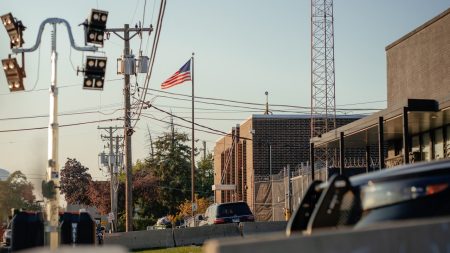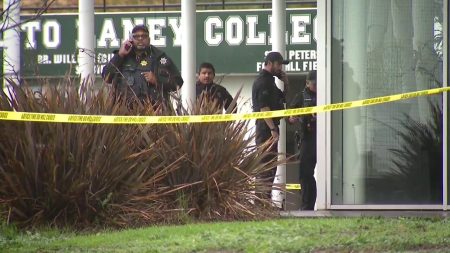Broken Promises: How “Disaster-Proof” Homes Failed Philippine Earthquake Victims
The Shattered Dream of Safety in Cebu
In the early morning darkness of a seemingly ordinary day in Cebu, Philippines, the earth betrayed thousands of residents with violent shaking that would forever change their lives. For many victims of this devastating earthquake, the tragedy carries a particularly bitter irony: they had invested their life savings in homes marketed as capable of withstanding natural disasters. These structures—promoted in glossy brochures with promises of reinforced foundations and earthquake-resistant design—now stand as broken monuments to broken promises. “We chose this development specifically because they guaranteed safety during typhoons and earthquakes,” explains Elena Mendoza, a 43-year-old school administrator whose family home now displays a massive diagonal crack that has rendered it uninhabitable. “They called it ‘future-proof living.’ Now we have no future here.”
The recent 7.1 magnitude earthquake that struck the Central Visayas region has exposed critical vulnerabilities in the Philippine housing sector, raising urgent questions about regulatory oversight, building code enforcement, and corporate accountability. According to preliminary assessments from the Philippines Institute of Civil Engineers, approximately 40 percent of damaged structures in certain affected areas were built within the last decade—a period that saw rapid real estate development across Cebu Province. Many of these newer developments explicitly marketed disaster resilience as a key selling point, commanding premium prices from buyers who believed they were investing in safety. Regional disaster management officials now face mounting pressure to investigate how structures marketed as earthquake-resistant could fail so catastrophically, leaving thousands homeless despite their prudent investments in supposedly secure housing.
Regulatory Failures and Construction Shortcuts
A closer examination of the affected properties reveals a troubling pattern of regulatory failures and construction shortcuts. Documents obtained by local journalists show that while developers widely advertised earthquake-resistant features, actual construction practices often deviated significantly from approved building plans. “The disconnect between what was promised and what was delivered is staggering,” notes Dr. Manuel Santos, a structural engineering professor at the University of San Carlos who has been inspecting damaged homes. “We’re seeing inadequate reinforcement in critical support columns, substandard concrete mixtures, and foundations that simply weren’t built to specifications.” In multiple housing developments across Cebu’s growing suburban areas, residents report paying substantial premiums—often 15-20 percent above market rates—specifically for disaster-resistant construction features that apparently were never properly implemented.
Government oversight mechanisms that should have prevented such discrepancies largely failed these homeowners. The Department of Human Settlements and Urban Development acknowledges significant challenges in enforcement capacity, with only 23 building inspectors assigned to monitor thousands of ongoing construction projects across Cebu Province prior to the earthquake. This understaffing created perfect conditions for what some officials now privately describe as “cosmetic compliance”—developments that satisfy paperwork requirements while cutting corners on actual construction standards. For victims like the Reyes family, who spent their life savings on a home in the “Eastland Residences” development, the consequences are devastating. “We were shown certificates of compliance with earthquake standards,” says Fernando Reyes, standing beside the collapsed second story of his family home. “Now I understand those papers meant nothing without someone actually verifying the work.”
Human Cost Behind the Statistics
Behind the technical discussions of building codes and regulatory failures lie thousands of shattered lives. The human cost of these construction shortcomings extends far beyond property damage, creating a cascading crisis of displacement, financial ruin, and psychological trauma. In the hard-hit municipality of Consolacion, the “SafeHaven Hills” subdivision—marketed specifically to young professionals seeking security for their growing families—now resembles a war zone. Thirty-four-year-old nurse Maricel Domingo, eight months pregnant with her second child, now lives in a makeshift evacuation center after her family’s home partially collapsed. “We chose this house because the developer promised it would protect our children during disasters,” she explains, fighting back tears. “We paid extra for the ‘disaster-proof package.’ Now my five-year-old son has nightmares every night, thinking the ground will shake again and the ceiling will fall.”
The financial implications for these families are equally devastating. Most affected homeowners still carry substantial mortgage debt on properties that are now uninhabitable or require repairs costing more than their original purchase price. Insurance claims are being systematically rejected as investigators discover discrepancies between approved building plans and actual construction—discrepancies that technically violate policy terms. Banking regulators report that approximately 4,300 households in affected areas face the impossible situation of paying mortgages on uninhabitable homes while also covering emergency housing costs. For middle-class families who stretched their finances to afford these supposedly safer homes, the earthquake has not just destroyed their houses but their economic future. “We will be paying for a pile of rubble for the next fifteen years,” says accountant Jerome Villegas, whose family now shares a single room in his in-laws’ home after their house in “TyphoonMaster Estates” suffered irreparable structural damage.
Corporate Accountability in Question
As the immediate emergency response transitions into recovery planning, questions of corporate accountability have moved to the forefront of public discourse. Several major developers responsible for the most severely affected subdivisions have issued carefully worded statements expressing sympathy while avoiding any admission of liability. Sunshine Properties, the developer behind three of the hardest-hit subdivisions, released a statement claiming their buildings “met or exceeded all regulatory requirements at the time of construction” and suggesting that “unprecedented ground acceleration particular to certain geological formations” was responsible for the damage. This stance has infuriated both victims and engineering experts, who point to neighboring structures built to proper standards that withstood the earthquake with minimal damage.
Legal experts predict a wave of complex litigation that could reshape the Philippine real estate industry. “These cases will likely center on the discrepancy between marketing claims and actual construction practices,” explains Attorney Cristina Mendez, who specializes in real estate law and has already been contacted by over 60 affected families. “When a developer explicitly promotes and charges premium prices for earthquake resistance, that creates a specific contractual obligation beyond basic building code compliance.” The Philippine Competition Commission has announced preliminary investigations into potential misrepresentation in the marketing of disaster-resistant housing, while congressional leaders have called for special hearings on construction standards enforcement. For victims, however, these proceedings offer little immediate relief. “Investigations and lawsuits won’t rebuild our home or recover the ten years of savings we lost,” says former homeowner Ricardo Tan. “The system failed to protect us before disaster struck—why should we believe it will help us now?”
Rebuilding Trust While Rebuilding Homes
As Cebu begins the long process of reconstruction, rebuilding trust may prove as challenging as rebuilding infrastructure. The earthquake has fundamentally shaken public confidence in the housing industry, regulatory systems, and the very notion of structural safety. Government officials have announced emergency measures including mandatory structural reassessments for all developments built by companies with properties that suffered major failures during the earthquake. The Department of Human Settlements has proposed legislation that would significantly increase penalties for construction standard violations and establish an independent certification system for disaster-resistant housing claims. “We cannot simply rebuild the same vulnerable structures and systems that failed our people,” stated Regional Director Gloria Vasquez during a recent press conference announcing these initiatives.
For the victims, recovery remains an uncertain and distant prospect. Community-based organizations of affected homeowners have formed across Cebu Province, creating support networks and collective advocacy groups. These grassroots movements have begun documenting construction deficiencies, sharing legal resources, and pressing for accountability from both developers and government agencies. “We bought these homes to protect our families, and instead, they became deathtraps,” says Maria Concepcion Luna, who now leads the Homeowners for Justice coalition representing over 700 affected families. “No one can give us back what we’ve lost, but we demand truth, accountability, and real reform that ensures no other family suffers as we have.” As Cebu rebuilds from this disaster, the most important construction project may be rebuilding a system where safety promises are actually kept, and where the homes people trust with their families’ lives actually deserve that trust.










